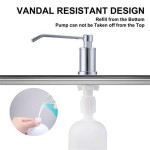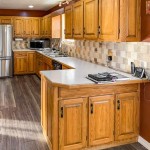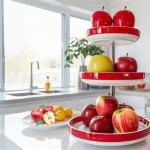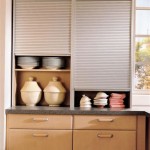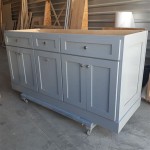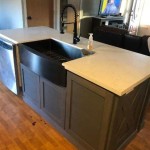Ceramic or Porcelain Tile for Kitchen Floor
Kitchen flooring requires materials that can withstand heavy traffic, spills, and temperature fluctuations. Ceramic and porcelain tiles stand out as popular choices due to their durability and aesthetic versatility. Understanding the differences between these two materials and their respective pros and cons is crucial for making an informed decision.
Both ceramic and porcelain tiles are manufactured from clay and other natural materials, fired at high temperatures in a kiln. The key distinction lies in the type of clay used and the firing process. Porcelain is made from denser, finer clay and fired at higher temperatures than ceramic. This results in a harder, more durable, and less porous tile.
Porcelain Tile: Advantages and Disadvantages
Porcelain's density contributes significantly to its water resistance. This makes it an excellent choice for kitchens, where spills are frequent. The low porosity also makes porcelain tile resistant to staining and easier to clean. Its hardness contributes to its exceptional durability, making it highly resistant to chips, cracks, and scratches. This makes it suitable for high-traffic areas.
Porcelain tiles are also available in a wide variety of colors, patterns, and textures. Manufacturers can replicate the look of natural materials like wood, stone, and marble, providing homeowners with extensive design flexibility. Some porcelain tiles are even rectified, meaning their edges are precisely cut, allowing for minimal grout lines and a more seamless appearance.
However, porcelain's hardness can also be a disadvantage. Installation can be more challenging, often requiring specialized tools and expertise. The dense material can be difficult to cut and drill. Porcelain tile can also feel colder underfoot than ceramic, although this can be mitigated with underfloor heating.
Cost is another factor to consider. While prices vary depending on the specific tile, porcelain generally tends to be more expensive than ceramic.
Ceramic Tile: Advantages and Disadvantages
Ceramic tile provides a more budget-friendly alternative to porcelain. While not as dense or durable as porcelain, it still offers good resistance to wear and tear, making it suitable for many kitchen applications. Ceramic is also easier to cut and install than porcelain, making it a more DIY-friendly option.
Ceramic tile comes in a wide array of colors, patterns, and finishes, offering significant design versatility. While not as extensive as porcelain, the options are still plentiful. Glazed ceramic tiles offer excellent stain resistance and are easy to clean.
However, ceramic's higher porosity compared to porcelain makes it more susceptible to water damage and staining if the glaze is chipped. It is also less durable overall and more prone to cracking and chipping under heavy impact or pressure.
Choosing the Right Tile: Key Considerations
Several factors should influence the decision between ceramic and porcelain tile for a kitchen floor. Budget constraints are a significant consideration. If cost is a primary concern, ceramic offers a more affordable option. However, if longevity and minimal maintenance are priorities, the investment in porcelain may be worthwhile.
The level of foot traffic in the kitchen is another important factor. For high-traffic kitchens, porcelain's superior durability makes it a more suitable choice. Installation complexity should also be considered. If a DIY installation is planned, ceramic's easier handling may be preferred. However, for complex designs or large areas, professional installation is recommended regardless of the tile type.
The overall design aesthetic of the kitchen plays a crucial role. Both ceramic and porcelain offer diverse design possibilities. Consider the existing color palette, cabinetry, and countertops when selecting a tile that complements the overall aesthetic. The desired level of maintenance should also be considered. Porcelain's lower porosity makes it easier to clean and maintain, while ceramic may require more frequent cleaning and sealing.
Maintenance and Care
Regardless of whether ceramic or porcelain tile is chosen, proper maintenance is essential for preserving its appearance and longevity. Regular sweeping or vacuuming is recommended to remove loose dirt and debris. Spills should be cleaned up promptly to prevent staining. Periodically cleaning the floor with a suitable tile cleaner helps maintain its shine and removes any accumulated grime.
Avoid using abrasive cleaners or scouring pads, as these can scratch the tile surface. Using mats or rugs in high-traffic areas can help protect the floor from wear and tear. For grout lines, regular cleaning with a grout brush and a mild cleaning solution helps prevent discoloration and mildew growth.
By carefully considering the characteristics of ceramic and porcelain tile in relation to specific kitchen needs and design preferences, homeowners can make an informed decision that results in a beautiful and functional kitchen floor for years to come.

Which Is Better For Kitchen Flooring Porcelain Tile Or Ceramic Lx Hausys

Ceramic Tile Kitchen Floor Pros Cons And Best Designs Stone

Best Tile For Kitchen Floor How To Make The Right Choice Welcome Rubi Tools Blog

Ceramic Tile Kitchen Floor Pros Cons And Best Designs Stone

Ceramic Tile Kitchen Floor Pros Cons And Best Designs Stone

5 Things To Consider When Selecting Kitchen Floor Tile

Kitchen Floor Tiles Ceramic Vinyl More The Tile Shop

Porcelain Vs Ceramic Tiles For Floor Heating Blog Warmup Usa

Ceramic Tile Kitchen Floor Pros Cons And Best Designs Stone

Ceramic Vs Porcelain Tiles Pros Cons Which One Is Right For You

